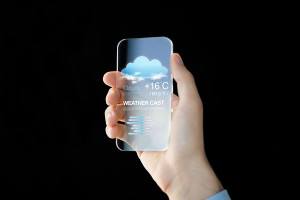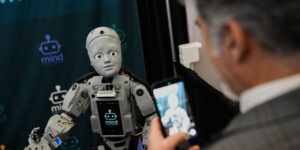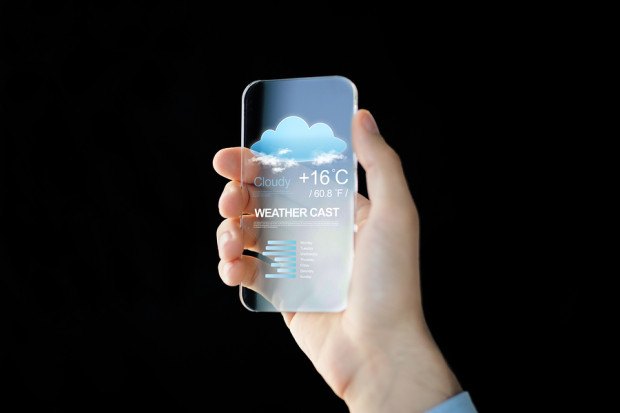 With policyholders carrying barometers disguised as smartphones in their pockets every day and telematics devices capturing car locations, insurers and their customers stand to gain big benefits from big data, experts said at a recent conference.
With policyholders carrying barometers disguised as smartphones in their pockets every day and telematics devices capturing car locations, insurers and their customers stand to gain big benefits from big data, experts said at a recent conference.
In hard numbers, $5 billion in auto hail claims could be eliminated, Andrew Rice, vice president of Analytics for The Weather Company, suggested during the FC Business Intelligence Insurance Analytics USA Summit in Chicago earlier this month. Speaking just two days before hailstorms in Fort Worth, Texas, pelted insurers with more than $300 million in auto damage claims, Rice described an experiment between The Weather Company and insurers that not only prevents auto hail claims but also strengthens carrier ties with customers.
Essentially, The Weather Company started working with insurance providers to deliver personalized text messages to insureds, he said, explaining that these weren’t the kinds of general alerts from the National Weather Service that say severe weather is on the way. People will ignore those because they’ve gotten so many in the past and the events they were warned about didn’t actually happen.
But “when we say, ‘Hey, Mr. X, your car is about to get completely demolished by hail at this location. You might want to move it. Your friends at the insurance company,’ they take action,” Rice reported. “It’s personal. It’s to their location. It’s not just a general weather alert.”
While not all of the recipients of these personalized texts actually moved their cars, according to Rice, 52 percent did.
“Do the math. An average car claim is about $3,000.There’s a 1-in-1,000 chance of an auto hail claim in America every year…If 52 percent take action, [then] you get $1.50 in claims savings a year per policyholder,” Rice said. “And in Kansas, it’s $30 because they have a 1-in-50 chance of an auto hail claim.”
Pocket Barometers vs. Airport Data
While Rice’s example illustrated a way in which insurers can derive a measurable financial benefit from weather data, during the Summit session he and Barry Powers, head of Cognitive Insurance Solutions for IBM, focused more on the ways in which insurers can use big data generally, together with analytics and cognitive computing, to become essential advisers to customers—a recurring theme of the conference. (Stay tuned for a related Summit article, “If the Insurance Industry Were Netflix, Amazon or Apple,” publishing later this week.)
IBM and The Weather Company formed a partnership last year because IBM recognized the value of a data trove that the Weather Company is amassing related to businesses, including insurers. “It was not just data. It was sensors, a network and an IoT [Internet of Things] platform that really was different than anything out there in the industry,” said IBM’s Powers.
Rice described the evolution of The Weather Company from a media company to a big data company, which started with “weather geeks” buying backyard weather stations and voluntarily sending information to the company—some 200,000 and growing. These new data points produce better forecast models than the airport data that insurers and other businesses frequently use for weather information. Instead of getting airport data once an hour as The Weather Company did in the past, “we’re now collecting data on a one minute-by-one minute basis” from all the backyard sensors. “We know what’s happening on a neighborhood-by-neighborhood level,” Rice said.
While the temperature sensors won’t be useful for phones carried in pockets or purses, pressure readings are consistent whether a phone is in or out of pocket. “We’re going to know in real time which pockets get hit by a tornado,” Rice said, explaining that a tornado is basically a rapid pressure drop.
Over 180 million people use The Weather Company’s mobile app on their phones, and many are willing to share pressure readings, he reported. “That will help our prediction of a tornado and help you guys know immediately after a disaster where the disaster zone actually was,” he told carrier representatives in the audience.
He reported that The Weather Company is now collecting seven million pressure observations a day from the community of Weather app downloads, with a goal of getting to 100 million a day. Already, the company has seen forecasts gaining in accuracy with pocket pressure readings coming into its models.
“Collecting data and using it to create better predictive models fundamentally changed us [into] a big data and analytics company that IBM wants to buy,” he said, also describing how the company analyzes forecast models from 150 different agencies around the world to pinpoint the best model results in given locations.
Increased model accuracy and real-time information carry benefits for insurers, according to Powers. “If you’re able to warn your customers, if you’re able to shut down the new business spigot, you’re going to have a huge competitive advantage over other insurance companies.”
Painting a slightly different picture, Rice said, “We can text your VP of Cat and say, ‘You might want to get out of your meeting right now because 1,000 homes just got hit [by an event] three seconds ago.
“That might change the response speed. That might change how many adjusters you can get in, the hotel rooms for the response, and ultimately [it might mean] that you’re the first truck driving down the street interacting with the policyholders, [increasing] the ability to retain them.
“There’s a huge opportunity for being able to communicate with your policyholder during a disaster, sending them an alert saying a disaster is coming, or ‘We know a disaster has happened. We’re going to be set up on the corner of Third and Main. Send us a picture of your damage.'”
Both men highlighted opportunities for back-and-forth communications between insureds and insurers. “We decided there were a lot of weather providers in the insurance industry mainly focusing on weather forensics for claims or long-term weather risk [for underwriting], [asking] what is the decadal risk of hail for this house that I’m trying to write,” said Rice, noting that when The Weather Company started working with insurers three years ago, it set out on a different path. “No one was actually taking on the question: Could claims actually be prevented in the first place?”
“As we start to connect the cars, connect the people and everything is mobile, we can change behavior through real-time communication with policyholders,” he said.
If the right information was given to the right person at the right time, we could actually prevent every auto hail claim there is—$5 billion a year in losses, he said, referring to the original example described in this article.
Rice concluded his remarks by underscoring one point for insurance company analysts in the audience. “If you’re just using airport data, your analytical insight is going to be muddy or in some cases incorrect,” he said. Everyone knows that when it’s raining in some parts of town, it’s sunny in others. Insurers need to “gravitate toward data sets that have high spatial and high temporal resolution,” he said.





















 Slideshow: Carrier Management’s 2025 Top Editor’s Picks (Unlocked)
Slideshow: Carrier Management’s 2025 Top Editor’s Picks (Unlocked)  Market Softening Accelerates During 1/1/2026 Re Renewals
Market Softening Accelerates During 1/1/2026 Re Renewals  Northern California Flooding This Weekend Caused by Heavy Rain, High Tides
Northern California Flooding This Weekend Caused by Heavy Rain, High Tides  Breaking: Andersen to Replace Zaffino as CEO of AIG on June 1
Breaking: Andersen to Replace Zaffino as CEO of AIG on June 1 













